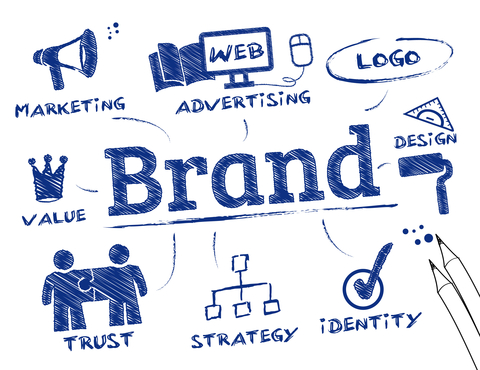
B2B 品牌策略有兩個理念。
有些人認為,企業或產品的品牌和定位對增加銷售量和市場佔有率貢獻最大。 其他人則認為創新和產品改進是成功的關鍵。
雖然定期追蹤這些因素可以闡明這一爭論,但許多公司根本不採用這種技術。
品牌推廣的一個必然結果是 品牌意識。品牌名稱對 B2B 世界的購買決策的影響程度尚不清楚。當需要採購產品和服務時,通常有一系列必須滿足的標準,這些標準通常會被納入提案中,然後發送給多個供應商進行投標。如果滿足大多數或所有基本要求,價格可以勝過品牌名稱,成為決定性因素,特別是如果該商品被視為「商品」。
有一些證據表明,反覆接觸某個品牌名稱可以(潛意識地?)影響其對鮮為人知或未知競爭對手的選擇。由於 B2B 市場的研究報告較少,因此尚不清楚品牌推廣是否與 B2C 環境中一樣有效。
什麼是品牌研究?
品牌研究是市場研究的一個專門方面,旨在理解、評估和塑造品牌形象。它試圖揭示一個品牌的獨特主張,以及它如何與目標受眾產生共鳴。
品牌研究收集、分析和解釋與品牌在市場中的認知、表現、認知度和差異化相關的數據。它不僅僅是標誌和標語,它深入探討了品牌如何在情感和心理上與消費者建立聯繫。
品牌研究可以採用多種方法,從調查和焦點小組到深入訪談和觀察研究。選擇的方法通常取決於研究目標和所需的洞察深度。
此外,它還可用於多種目的:
- 品牌審核: 了解品牌目前的市場地位。
- 競品分析: 評估品牌如何與競爭對手競爭。
- 品牌延伸: 探索將品牌擴展到新領域或新產品的機會。
- 品牌重塑: 確定品牌改革的需求和潛在策略。
……還有更多。
為什麼它很重要?
品牌研究為企業提供了有關其品牌在市場上的優勢、劣勢、機會和威脅的寶貴見解。它充當品牌的指南針,確保與目標受眾的價值觀、願望和需求保持一致。
最新的廣告是否能引起觀眾的共鳴?新標誌是否傳達了品牌的精髓?這些關鍵問題在這裡找到答案——品牌研究作為一個持續的回饋循環,為企業提供了多種好處,包括:
• 深入了解消費者: 它不僅可以幫助品牌了解消費者對他們的看法,還可以了解他們為什麼會有某種感覺。這種豐富的背景有助於創建在個人層面產生共鳴的訊息。
• 風險緩解: 研究可以作為試驗場。透過評估初步反應,品牌可以先發制人地識別潛在的陷阱和成功,並相應地優化策略。
• 追蹤品牌健康狀況: 品牌研究可以作為品牌的定期健康檢查。透過監控品牌回想、認知和忠誠度等關鍵績效指標,企業可以採取積極措施來培養和鞏固其品牌聲譽。
• 競爭優勢: 透過深入了解獨特的銷售主張和差異化因素,品牌可以獨特地定位自己,吸引的不僅僅是潛在客戶的一瞥。
• 策略決策: 決策者可以更有信心地制定策略。它提供了一個路線圖,指出何時推進、何時轉向以及何時暫停。
B2B市場定位
品牌在市場中的定位應使其在一個或多個屬性上與競爭對手明顯區分開來,例如它是做什麼的? 它給人一種怎樣的感覺?它在價格與品質連續體中處於什麼位置?
因此,行銷工作應著重於讓市場了解您的公司或產品的獨特地位和優勢。以下是一些範例:
將傳統媒體與新媒體以及互動社交網站結合的綜合多通路方法可以成為接觸潛在客戶和現有客戶的有效手段。
電子郵件、數位和社群媒體、SEO、SEM、網站和部落格的不同用途都可以透過自己獨特的訊息達到特定目標。
B2B品牌追蹤
在建立品牌追蹤研究時,請考慮以下重要標準 –
- 衡量什麼(例如 % 對品牌的認知、對品牌的態度、# 的潛在客戶、每個潛在客戶的成本、成交率、美元銷售)
- 如何測量
- 測量頻率(即每年、每季、每隔一年)
這 指標 選擇的關鍵指標應該是品牌實力和地位以及潛在買家或影響者考慮的因素。 如果不追蹤正確的指標,B2B 行銷人員就很難展示任何投資報酬率,也很難向高階主管證明自己的價值。
所以開發一個 民調 帶有問題的工具將告訴您您的品牌的知名度、認知度、喜愛程度等,以及與您的主要競爭對手相比如何。追蹤研究與許多其他類型的研究不同,因為它旨在多次進行,並且更改次數最少。因此,在提出問題時要額外考慮這一點。
如何進行品牌追蹤研究
品牌追蹤研究應包括潛在客戶的代表性樣本。透過這種方式,您將了解潛在客戶和現有客戶如何看待您的品牌。
嘗試獲得足夠大的樣本量,以便隨著時間的推移追蹤的差異真正有意義。 如果整個市場相對較小或難以進入,這可能會帶來挑戰。在這種情況下,專業第三方研究公司的資源和經驗可能會非常有幫助。
除了郵件、線上或電話調查之外,還可以執行另一種追蹤(例如貿易展覽線索) 行銷自動化軟體 可以追蹤潛在客戶在整個銷售週期中採取的行動。這使您可以查看哪些事件或訊息產生了更高品質的潛在客戶和轉換。
追蹤頻率
重要的是要記住,改變品牌認知需要時間。 追蹤研究使您能夠衡量並充分評價品牌建立工作。
- 如果您的產品處於動態市場(例如技術、電信),您可能會發現自己更頻繁地更改產品和行銷訊息,因此希望更頻繁地進行追蹤。
- 如果您的銷售週期相當長,品牌和定位工作可能需要更多時間才能展現其影響力。
一般來說, B2B 和工業市場銷售週期往往較長——通常為 6 個月或更長時間。 例如,在貿易展覽、活動或從您的網站下載之後立即追蹤銷售數量並不能真正表明該行銷活動的價值。因此,雖然某人可能成為貿易展覽的領導者,但他們可能要等到很晚的時候才能轉變為客戶。
品牌研究的新興趨勢
品牌研究不斷發展,與技術進步、文化轉變和消費者行為變化保持同步。以下是塑造此類研究未來的一些新興趨勢:
• 數位民族誌: 由於現在很大一部分消費者的大部分時間都在網路上度過,Research 正在深入研究數位民族誌。這種方法可以解讀數位平台上的消費者行為,使品牌能夠了解影響消費者的數位接觸點。
• 人工智慧與預測分析: 人工智慧正在重塑品牌研究。人工智慧工具能夠快速篩選和分析大量資料集,提供預測性見解,使品牌能夠根據未來趨勢而不僅僅是歷史資料進行預測和製定策略。
• 即時品牌追蹤: 隨著數位媒體和即時回饋機制的興起,研究正在轉向即時品牌追蹤。品牌現在可以立即獲得有關活動、發布或任何其他舉措的反饋,使他們能夠即時調整策略。
• 文化鄰近性: 隨著品牌走向全球化,人們越來越需要了解當地文化、細微差別和情感。品牌研究越來越關注文化洞察力,確保品牌在傳達全球訊息的同時在當地引起共鳴。
品牌研究的機會
品牌研究為企業提供了一座充滿機會的金礦,無論其規模或行業如何——以下是它如何改變企業的遊戲規則:
• 了解消費者心理: 研究為了解消費者的想法提供了一個視窗。透過了解品牌忠誠度的驅動因素,企業可以調整策略,以與受眾建立更深入的連結。
• 產品開發與創新: 企業可以了解市場差距或未滿足的消費者需求。這可以指導創新管道,確保產品開發符合品牌價值和消費者期望。
• 增強競爭優勢: 品牌研究提供了競爭格局的全面視圖,使企業能夠識別差異化機會以及可以獲得競爭優勢的領域。
• 全球擴張: 對於著眼全球市場的企業來說,它提供了對文化細微差別、偏好和看法的洞察,確保品牌的全球策略具有文化敏感性和本地相關性。
品牌研究的挑戰
雖然品牌研究的潛力巨大,但企業在進行這項研究時確實面臨著某些挑戰 - 以下是對公司可能遇到的一些障礙的更深入的研究:
• 主觀性: 品牌研究的固有挑戰之一是品牌認知的主體性。與定量數據不同,這項研究的定性見解需要細緻的解釋和更深入的理解。
• 成本影響: 全面的品牌研究可以代表一項重要的投資。雖然回報通常是值得投資的,但小型企業可能會發現分配大量預算來評估品牌在多個市場的全球認知度是一項艱鉅的任務。
• 選擇正確的方法: 有一系列可用的研究方法,確定最適合特定品牌查詢的方法可能具有挑戰性。錯誤的選擇可能會扭曲結果並導致錯誤的策略。
• 全球挑戰: 在多個國家進行研究,文化差異可能會帶來挑戰,並且需要更高水準的專業知識和敏感度。
• 整合見解: 研究完成後,將其見解整合到可行的策略中需要研究團隊、行銷部門和其他利害關係人之間的無縫協作。確保每個人都在同一頁上有時可能是一個障礙。
戰略考慮
許多 B2B 行銷人員根本不追蹤投資報酬率。他們可能會盲目飛行,更多地依靠本能和運氣來獲得成功。
如果您願意檢查品牌和定位策略中哪些有效,哪些需要改進,那麼實施品牌追蹤機制是非常值得的。 它不一定會消耗資源,而且可以成為衡量您表現的重要工具,並有助於向最高管理層展示您的價值。



